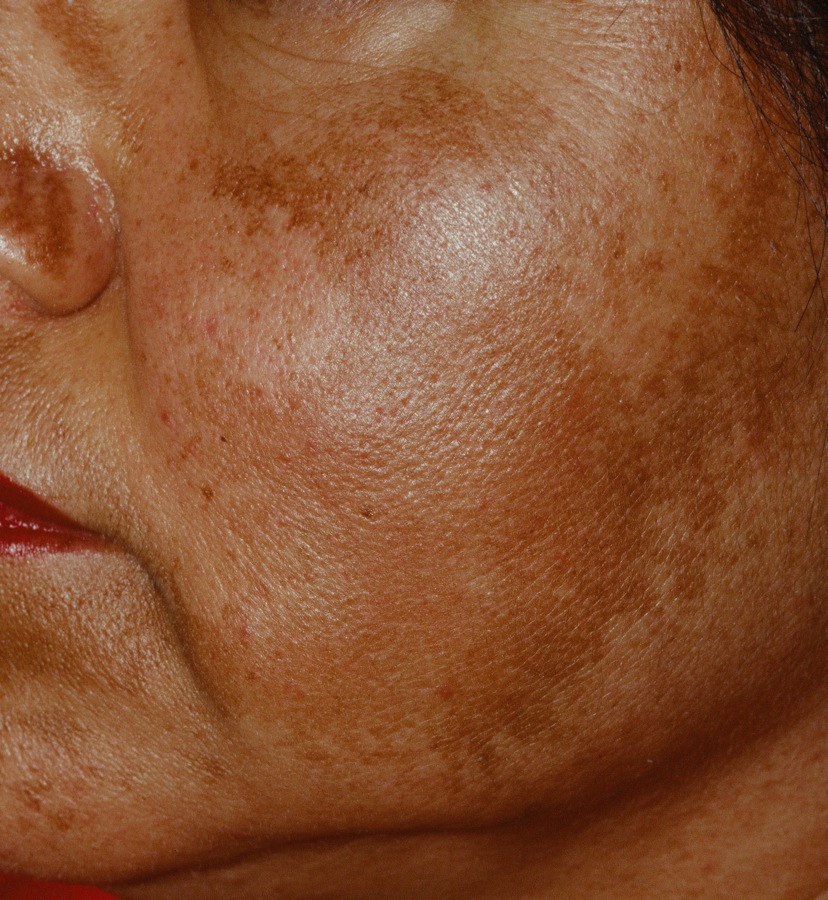 Melasma in a typical location.
Melasma in a typical location.
MELASMA
Melasma is a very common darkening of the skin of the face in woman. It presents as symmetric brown patches, particularly on the cheeks and upper lip.
- Sun exposure as well visible light from indoor lighting trigger melasma.
- Female hormones (e.g., endogenous, oral contraceptives, pregnancy) are the other key drivers of melasma.
- Melasma provides natural sun protection and there is some evidence that patients with melasma are less likely to develop melanoma.
- There is a four-fold increase of thyroid disease in melasma patients.

Melasma of the cheek in a Hispanic woman.
RegionalDerm
Who is Dr. White? | Privacy Policy | FAQs | Use of Images | Contact Dr. White
It is not the intention of RegionalDerm.com to provide specific medical advice, diagnosis or treatment. RegionalDerm.com only intends to provide users with information regarding various medical conditions for educational purposes and will not provide specific medical advice. Information on RegionalDerm.com is not intended as a substitute for seeking medical treatment and you should always seek the advice of a qualified healthcare provider for diagnosis and for answers to your individual questions. Information contained on RegionalDerm.com should never cause you to disregard professional medical advice or delay seeking treatment. If you live in the United States and believe you are having a medical emergency call 911 immediately.
 Melasma in a typical location.
Melasma in a typical location. Melasma in a typical location.
Melasma in a typical location.